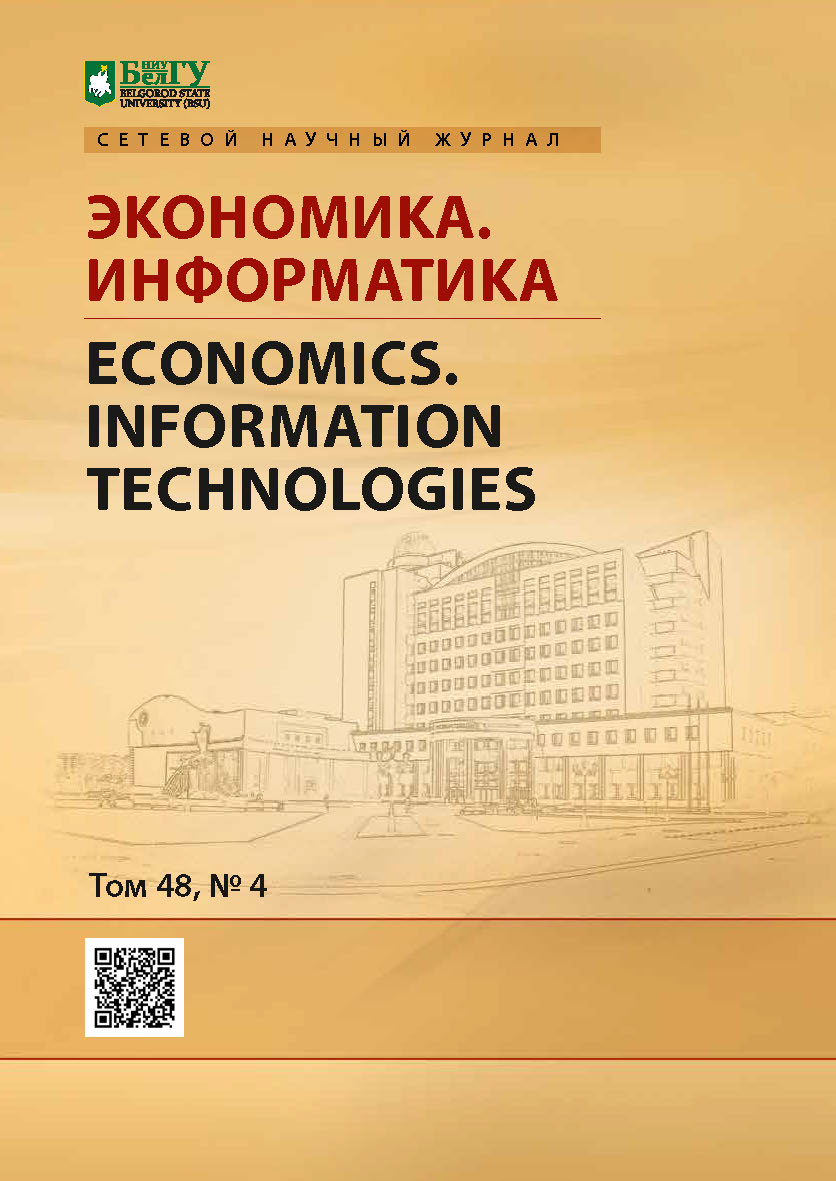About noiseimmunity of signal-code structures for internet of things
DOI:
https://doi.org/10.52575/2687-0932-2021-48-4-822-830Keywords:
IoT systems, spread spectrum, chirp, orthogonal subband basis, signal-to-noise ratio, error probability, fluctuation noiseAbstract
The article about a method for coding signal-code structures based on an orthogonal sub-band basis with high resistance from fluctuation noise in IoT systems. Shown results of comparative computational experiments of bit error rate on the spread spectrum transmission method in LoRa system and the method based on the eigenvectors of the subband basis. Another solution is use index of subband matrix for coding bit information, this is like time shift of Chirp Spread Spectrum (CSS) base signal. If transmit bits on each eigenvector it is improve throughput of the system and decrease of noise immunity and bit error rate same as binary phase shift key (BPSK) modulation. But it gives more opportunities for adaptive speed correction for current level of Additive white Gaussian noise (AWGN) channel. The article contains results of numerical experiments of spreading factor in AWGN channel against of signal to noise ratio (SNR). Coding by indexing eigenvectors have small complexity and can be build only on memory use.
Downloads
References
Жиляков Е.Г., Урсол Д.В., Магергут В.З., 2012. Разработка нового способа формирования сигналов для систем доступа к широкополосным мультимедийным услугам. Научные ведомости Белгородского государственного университета. Серия: экономика. информатика. Издательство: Белгородский государственный национальный исследовательский университет, Белгород.
Урсол Д.В., 2012. Метод обеспечения помехоустойчивости информационных коммуникаций при субполосной передаче информации: дис. канд. техн. наук: 05.13.17 – Теоретические основы информатики. Белгород.
Fialho V., Azevedo F., 2018. Wireless Communication Based on Chirp Signals for LoRa IoT Devices. ETC: ISEL Academic Journal of Electronics, Telecommunications and Computers IoT-2018 Issue, 4 (1).
Bouras C., Kokkinos V., Papachristos N., 2018. Performance evaluation of LoraWan physical layer integration on IoT devices. Global Information Infrastructure and Networking Symposium (GIIS).
Afisiadis O., Cotting M, 2019. On the Error Rate of the LoRa Modulation with Interference. IEEE Transactions on Wireless Communications PP(99):1–1.
Wang X., Fei M., Li X., 2008. Performance of Chirp Spread Spectrum in Wireless Communication Systems. Conference: Communication Systems ICCS 2008. 11th IEEE Singapore International.
Savaux V., Ferré G., 2021. Simple Asymptotic BER Expressions for LoRa System over Rice and Rayleigh Channels. Wireless Telecommunications Symposium, San Francisco (virtual), United States. hal-03200448.
Jair A, Silva A, 2020. Theoretical and Experimental Evaluation on the Performance of LoRa Technology. DOI 10.1109/JSEN.2020.2987776.
LoRa™ Modulation Basics 2015. Revision 2, AN1200.22.
Rajni B., Pooja S., Javed A., 2012. Analysis of Chirp Spread Spectrum System for Multiple Access. International Journal of Engineering Research & Technology (IJERT), ISSN: 2278-0181, 1 (3).
Aiju T., Eldhose N., 2020. Chirp spread spectrum for narrow band long range bio sensor networks. International Journal Of Scientific & Technology Research. 9 (01).
Joerg R., Tallal E., 2018. Closed Form Approximation of LoRa Modulation BER Performance DOI 10.1109/LCOMM.2018.2849718, IEEE Communications Letters.
Tallal E., Joerg R., 2018. Analysis of BER and Coverage Performance of LoRa Modulation under Same Spreading Factor Interference. IEEE 29th Annual International Symposium on Personal, Indoor, and Mobile Radio Communications (PIMRC).
Gonzalez N., Bossche A., Val T., 2018. Specificities of the LoRa physical layer for the development of new ad hoc MAC layers. 17th International Conference on Ad Hoc Networks and Wireless, St Malo, France. pp.163–174.
Ferré G., Giremus A., 2018. LoRa Physical Layer Principle and Performance Analysis. ICECS 25th IEEE International Conference on Electronics Circuits and Systems.
Ferreira A., Ortiz F., Henrique L., Costa M. K., Foubert B., Amadou I., 2020. A study of the LoRa signal propagation in forest, urban, and suburban environments. Annals of Telecommunications – annales des télécommunications.
Staniec K., Kowal M., 2018. LoRa Performance under Variable Interference and Heavy-Multipath Conditions. Wireless Communications and Mobile Computing Volume 2018.
Abstract views: 293
Share
Published
How to Cite
Issue
Section
Copyright (c) 2021 ECONOMICS. INFORMATION TECHNOLOGIES

This work is licensed under a Creative Commons Attribution 4.0 International License.


